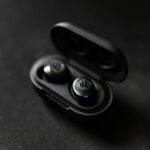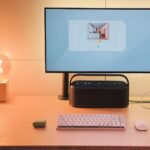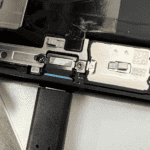The iPhone lock screen is your device’s first line of defense and information hub. The lock screen appears when you turn on or wake your iPhone, displaying notifications, the time, and quick access to certain features while keeping your device secure. It’s more than just a barrier to entry – it’s a customizable interface that provides at-a-glance information and convenient shortcuts.
You can personalize your lock screen with wallpapers, photos, and widgets. This allows you to see important details from your favorite apps without unlocking your device. The lock screen also lets you quickly open the camera, control media playback, and access other useful tools.
Understanding the difference between the lock screen and home screen is key. While the lock screen limits access to protect your privacy, the home screen is your main interface once the device is unlocked. You can adjust how long your iPhone stays unlocked before requiring authentication again, balancing convenience and security.
| Lock Screen Feature | Function |
|---|---|
| Notifications | Display alerts |
| Widgets | Show app info |
| Quick Actions | Camera, flashlight |
| Media Controls | Play, pause, skip |
| Time & Date | Always visible |
Lock Screen Overview and Customization
The iPhone Lock Screen serves as a gateway to your device. It displays essential information and allows quick access to certain features. You can personalize this screen to suit your preferences and needs.
Understanding the Lock Screen
The Lock Screen appears when you wake your iPhone. It shows the time, date, and notifications. You can access the camera and flashlight from here without unlocking the device. Widgets can be added to display information like weather, calendar events, or battery levels.
The Lock Screen uses your passcode, Face ID, or Touch ID for security. It prevents unauthorized access to your iPhone’s contents. You can choose to show or hide notification previews on this screen for privacy.
Customizing the Lock Screen
You can create a new Lock Screen by pressing the side button twice and holding the screen. Tap the plus icon to start fresh. Choose from various options:
- Wallpaper: Select photos, colors, or dynamic backgrounds
- Widgets: Add up to five small widgets or one large widget
- Font and color: Change the clock’s style and text color
- Depth effect: Make subjects appear in front of the time
You can set up multiple Lock Screens and switch between them easily. This feature allows you to have different screens for work, home, or specific events.
| Customization Option | Description |
|---|---|
| Photo shuffle | Automatically change wallpaper at set intervals |
| Live photos | Animate your Lock Screen with short video clips |
| Emoji wallpaper | Create patterns using your favorite emojis |
| Weather | Display current conditions and forecast |
These options help you create a Lock Screen that’s both functional and visually appealing.
Interactivity and Widgets
The iPhone lock screen now offers enhanced functionality with customizable widgets and interactive features. These additions allow quick access to important information and app controls without unlocking your device.
Adding and Managing Widgets
You can add widgets to your iPhone lock screen for at-a-glance information. To do this, wake your phone and tap and hold the lock screen. Tap “Customize” and select “Lock Screen”. Tap “Add Widgets” to choose from available options.
Widgets display info like weather, calendar events, and battery levels. You can drag and arrange them as needed. If space is limited, remove existing widgets before adding new ones.
The lock screen supports both static and live widgets. Static widgets show fixed information, while live widgets update in real-time.
| Widget Type | Examples | Update Frequency |
|---|---|---|
| Static | Calendar | Manual refresh |
| Live | Weather | Real-time |
Interactive Features
Your iPhone lock screen now includes interactive widgets that let you perform quick actions without unlocking. These widgets allow tasks like controlling music playback or marking to-do items as complete.
To use interactive widgets, simply tap the relevant widget on your lock screen. This opens a compact interface for the associated app.
The lock screen also offers quick access to common features. Swipe left to open the camera or swipe down from the top-right corner to access Control Center. These gestures work even when your iPhone is locked.
Security and Accessibility
The iPhone lock screen balances robust security measures with convenient accessibility features. It protects your device while allowing quick access to essential functions.
Configuring Security Settings
You can set up various security options for your iPhone lock screen. Choose between a passcode, Face ID, or Touch ID depending on your device model. Face ID offers advanced facial recognition, while Touch ID uses fingerprint scanning.
To enhance security:
- Use a complex passcode
- Enable “Erase Data” after 10 failed attempts
- Limit lock screen widgets
- Turn off notification previews
These settings help protect your data if your iPhone is lost or stolen.
Accessibility and Convenience
The lock screen provides quick access to useful features without unlocking your device. Accessibility Shortcuts let you activate assistive tools with a triple-click of the side button.
Popular accessibility features include:
- VoiceOver screen reader
- Magnifier for enlarged text
- LED flash for alerts
You can also access the camera, Control Center, and widgets from the lock screen. This balance of security and convenience makes your iPhone both protected and user-friendly.
| Feature | Security | Convenience |
|---|---|---|
| Face ID | High | Very High |
| Passcode | High | Medium |
| Widgets | Medium | High |
Focus modes and Do Not Disturb settings can be activated from the lock screen, helping you manage notifications and screen time effectively.
Frequently Asked Questions
The iPhone Lock Screen offers various customization options and features. Users can personalize their experience by modifying wallpapers, time settings, and adding widgets. Let’s explore some common questions about the Lock Screen.
How can one customize the Lock Screen wallpaper on an iPhone?
You can change your Lock Screen wallpaper by going to Settings > Wallpaper > Choose a New Wallpaper. Select an image from your photos or Apple’s collection. Adjust the image as needed and tap “Set” to apply it to your Lock Screen.
You can also create custom Lock Screens with different widgets and styles. Press and hold on the Lock Screen, tap the “+” button, and choose from various options.
What are the steps to modify the Lock Screen time settings on an iPhone?
To adjust the Lock Screen time settings, go to Settings > Display & Brightness > Auto-Lock. Choose how long your iPhone should wait before locking automatically.
You can also customize the time format. Go to Settings > General > Date & Time and toggle “24-Hour Time” on or off.
How does one add applications to the iPhone Lock Screen?
You can’t add full applications to the Lock Screen, but you can add widgets for quick access to app information. To do this, press and hold on the Lock Screen, tap “Customize,” and select “Add Widgets.”
Choose from available widgets and drag them to your preferred position on the Lock Screen.
What is the procedure to lock the iPhone screen to prevent accidental touches?
To lock your iPhone screen orientation:
- Swipe down from the top-right corner to open Control Center.
- Tap the lock icon with a circular arrow.
This prevents the screen from rotating when you turn your device.
How can one differentiate between the Lock Screen and the Home Screen on an iPhone?
The Lock Screen appears when you wake your iPhone. It displays the time, date, and notifications. You must unlock your device to access the Home Screen, which shows your apps and widgets.
The Lock Screen has a large clock and limited information. The Home Screen contains your app icons and allows full device access.
How can the screen on an iPhone be locked to restrict a child’s access?
- Go to Settings > Screen Time > Turn On Screen Time.
- Tap “Continue” and select “This is My Child’s iPhone.”
- Set up downtime, app limits, and content restrictions as needed.
You can also use Guided Access to limit your iPhone to a single app. Enable it in Settings > Accessibility > Guided Access.
| Feature | Lock Screen | Home Screen |
|---|---|---|
| Purpose | Security and quick info | App access and organization |
| Access | Immediate on wake | Requires unlocking |
| Customization | Wallpaper, widgets | App layout, folders, widgets |
| Functionality | Limited | Full device access |






